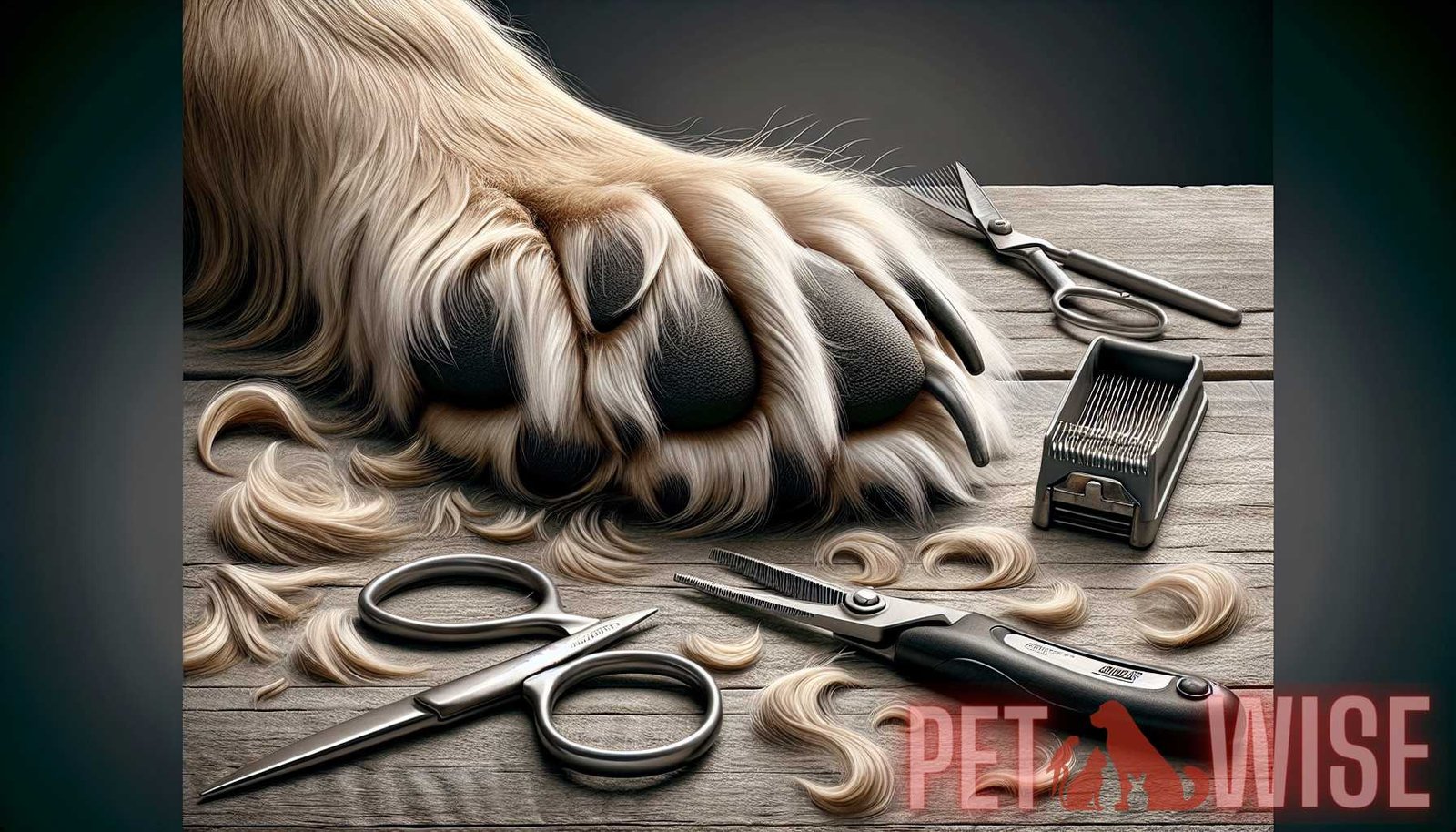Introduction
Having a pet is a wonderful experience that brings joy and companionship to our lives. Whether you are a proud owner of a furry feline or a boisterous canine, keeping your pet’s coat in optimal condition is essential for their overall health and well-being. The secret behind a pristine pet coat lies in the science of grooming, a realm where the right techniques, products, and tools come together to ensure that your pet’s fur looks and feels its best. In this article, we will delve into the world of pet grooming and unlock the mysteries behind achieving an immaculate and lustrous coat for your beloved furry friend.
The Importance of Pet Grooming
Pet grooming is not just about making your pet look good; it is an integral part of their overall health care routine. Regular grooming not only keeps their coat clean, but it also helps in maintaining healthy skin, preventing matting, reducing shedding, and detecting any underlying health issues. Here are some key reasons why grooming is crucial for your pet:
- Hygiene: Grooming helps in removing dirt, debris, and parasites from your pet’s coat, preventing skin infections and infestations.
- Shedding Control: Regular brushing and grooming techniques can help reduce shedding by removing loose hair and preventing it from accumulating in your home.
- Skin Health: Grooming promotes a healthy coat and skin by evenly distributing natural oils, preventing dryness, and improving blood circulation.
- Early Detection: Grooming sessions provide an opportunity to examine your pet’s skin, ears, and eyes for any signs of infections, cuts, or abnormalities.
- Bonding Time: Grooming sessions can be a positive bonding experience for you and your pet, strengthening the trust and connection between you.
Keeping these benefits in mind, let’s now dive into the science behind optimal pet grooming and understand how specific techniques and products can help you achieve the best results for your pet’s coat.
Grooming Techniques for a Pristine Coat
Brushing
Brushing is one of the most basic yet crucial grooming techniques that every pet owner should master. Regular brushing not only helps in removing loose fur and tangles but also stimulates the production of natural oils, promoting a healthy and shiny coat. The type of brush you use depends on your pet’s coat type:
- Bristle Brushes: Ideal for dogs with short, smooth coats, bristle brushes help in removing loose hair and distributing natural oils.
- Slicker Brushes: Slicker brushes are perfect for dogs and cats with medium to long hair, as they gently remove tangles and mats without causing discomfort.
- Pin Brushes: Suitable for pets with long, silky coats, pin brushes have widely spaced pins that prevent tugging or pulling.
- Undercoat Rakes: Undercoat rakes are designed to remove the loose, dead hair found in the undercoat of double-coated breeds like German Shepherds and Huskies.
- Detangling Combs: These specialized combs have long teeth that help in gently detangling mats and knots in your pet’s fur.
Remember to always start brushing from the head and work your way down, using gentle and slow strokes. This not only ensures that your pet is comfortable but also prevents accidental tugging or pulling of their fur.
Bathing
Regular bathing is an essential part of pet grooming, but it is important to strike the right balance. While frequent bathing can strip their coat of natural oils, leading to dryness and skin irritation, infrequent bathing can result in a dirty and smelly pet. Here are some key factors to consider when it comes to bathing your furry friend:
- Frequency: The frequency of bathing depends on your pet’s breed, coat type, lifestyle, and any underlying skin conditions. Generally, dogs can be bathed every 4-6 weeks, while cats require less frequent bathing as they are proficient self-groomers.
- Water Temperature: Use lukewarm water to prevent discomfort to your pet’s skin. Hot water can scald their sensitive skin, while cold water can cause stress and discomfort.
- Shampoo Selection: Choose a pet-specific shampoo that is gentle on their skin and does not contain harsh chemicals or irritants. Dilute the shampoo according to the instructions and lather it onto your pet’s coat, focusing on areas prone to odor, dirt, and oil buildup.
- Rinsing: To ensure all the shampoo is removed, rinse your pet thoroughly, taking care not to get water in their ears or eyes. Leftover shampoo residue can cause skin irritation and discomfort.
- Drying: After bathing, gently towel dry your pet’s coat, taking care not to rub vigorously. You can also use a pet-specific hairdryer on a low setting to speed up the drying process, but make sure to keep a safe distance from their skin to prevent burns. Avoid using human hair dryers, as the heat and noise can be overwhelming for your pet.
Trimming
Trimming your pet’s fur is an important aspect of grooming, especially for breeds with continuously growing hair or those prone to matting. Regular trims not only help in maintaining a tidy appearance but also prevent discomfort caused by hair pulling or tangling.
- Nail Trimming: Overgrown nails can lead to pain, discomfort, and even deformities in your pet’s paws. Use a pet-specific nail trimmer or grinder to keep their nails short, taking care not to cut into the quick, which can cause bleeding and pain.
- Ear Cleaning: Your pet’s ears should be checked and cleaned regularly to prevent infections and wax buildup. Use a pet-specific ear cleaner and cotton balls to gently wipe the outer part of their ears, avoiding inserting anything into the ear canal.
- Paw Pad Trimming: Long hair around the paw pads can cause discomfort and make it difficult for your pet to walk. Use grooming scissors or clippers to trim excess hair, ensuring that you do not cut too close to their skin.
- Sanitary Trim: For pets with long hair, a sanitary trim involves trimming the fur around their genitals and anus to maintain cleanliness and prevent matting.
- Full Body Trim: Breeds with continuously growing hair, such as Poodles and Yorkshire Terriers, require regular full-body trims to maintain a specific length and prevent matting. It is recommended to leave this task to a professional groomer, as it requires specialized skills and equipment.

Dental Care
Dental hygiene is often overlooked but plays a crucial role in your pet’s overall health. Poor oral hygiene can lead to gum disease, tooth loss, and even systemic health issues. Here are some essential dental care practices to incorporate into your pet’s grooming routine:
- Brushing: Use a pet-specific toothbrush and toothpaste to brush your pet’s teeth regularly. Start slowly, gradually introducing the toothbrush and toothpaste into their routine. Brushing can be challenging initially, so be patient and persistent.
- Dental Chews and Toys: Provide your pet with dental chews and toys that help in reducing plaque and tartar buildup. Look for products approved by veterinary dental associations for maximum effectiveness.
- Dental Treatments: In addition to regular brushing, your pet may benefit from professional dental cleanings performed by a veterinarian. These cleanings involve scaling, polishing, and sometimes extractions under anesthesia.
The Science Behind Optimal Pet Grooming
Now that we have covered the essential grooming techniques, let’s dive deeper into the science behind optimal pet grooming. Understanding the underlying science allows us to make informed choices and tailor our grooming practices to suit our pet’s specific needs.
The Role of Genetics
Genetics plays a significant role in determining our pet’s coat type, color, and texture. Different breeds have different coat types, including long, short, wiry, curly, or double coats. Understanding your pet’s coat type helps in selecting the right grooming techniques and products to achieve the best results.
For example, a Persian cat with long, dense fur requires regular brushing to prevent matting, while a Boxer dog with a short coat may require less frequent brushing. The genetics of coat color also impacts grooming, as certain colors may be more prone to sun damage, fading, or discoloration.
The Science of Fur Growth Cycles
The growth of a pet’s fur is regulated by a natural cycle known as the hair growth cycle. Understanding this cycle can help us optimize our grooming routine and achieve better results. The hair growth cycle consists of three phases:
- Anagen Phase: This is the active growth phase, during which the hair follicles produce new hair. The anagen phase can last from a few months to several years, depending on the breed and individual characteristics.
- Catagen Phase: In this transitional phase, hair growth slows down, and the hair follicles shrink. This phase lasts for a brief period, usually a few weeks.
- Telogen Phase: Also known as the resting phase, the telogen phase is when the hair follicles are dormant. Old hair remains in place, while new hair begins to grow underneath. The duration of the telogen phase can vary, lasting for a few weeks to months.
Understanding the hair growth cycle helps us determine the ideal frequency and timing for grooming activities such as brushing, bathing, and trimming. For example, trimming a pet’s fur during the anagen phase promotes healthier hair growth and prevents excessive shedding.
The Role of Nutrition
Nutrition plays a vital role in the overall health and appearance of our pets, including their coat. A well-balanced and nutrient-rich diet will contribute to a healthy, shiny, and lustrous coat. Here are some key nutrients that support optimal coat health:
- Protein: High-quality protein sources are essential for healthy coat growth as hair is primarily composed of protein. Ensure that your pet’s diet includes animal-based protein sources such as meat, fish, and eggs.
- Essential Fatty Acids: Omega-3 and omega-6 fatty acids are crucial for maintaining healthy skin and coat. These fatty acids can be found in fish oil, flaxseed oil, and some plant-based oils.
- Vitamins and Minerals: Certain vitamins and minerals, such as vitamin A, biotin, zinc, and copper, play a role in supporting coat health. Consult with your veterinarian to ensure that your pet’s diet is well-balanced and meets their specific nutritional needs.
By providing your pet with a high-quality diet that meets their nutritional requirements, you can enhance their coat’s overall health and appearance.
Conclusion
The science behind optimal pet grooming encompasses various factors, including genetics, hair growth cycles, grooming techniques, and nutritional needs. By understanding these key aspects, pet owners can ensure that their furry friends have a healthy, lustrous, and well-maintained coat. Remember to tailor your grooming routine to suit your pet’s specific needs, taking into account their breed, coat type, and any underlying health conditions. By investing time and effort into grooming, you can enhance the bond between you and your pet while keeping them looking their best. So, grab your brushes, select the right grooming products, and unlock the secrets to a pristine pet coat!


